Revlon an American cosmetics company, was founded in 1932, by Charles Revson and his brother Joseph, along with a chemist, Charles Lachman, who contributed the "L" in the REVLON name.
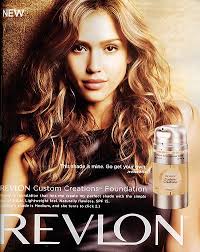 Starting with a single product — a new type of nail enamel — the three founders pooled their resources and developed a unique manufacturing process. Using pigments instead of dyes, Revlon developed a variety of new shades of opaque nail enamel. Successful in salons from the start, in 1937 Revlon started selling the polishes in department stores and drug stores. In six years the company became a multimillion dollar organization. By 1940, Revlon offered an entire manicure line, and added lipstick to the collection.
Starting with a single product — a new type of nail enamel — the three founders pooled their resources and developed a unique manufacturing process. Using pigments instead of dyes, Revlon developed a variety of new shades of opaque nail enamel. Successful in salons from the start, in 1937 Revlon started selling the polishes in department stores and drug stores. In six years the company became a multimillion dollar organization. By 1940, Revlon offered an entire manicure line, and added lipstick to the collection.
 In 1950, Revlon introduced a red lipstick and nail enamel called "Where's the Fire?" Revlon used the word "fire" again later in their "Fire and Ice" ads.In 1970 Revlon acquired the Mitchum line of deodorants.In 1973, Revlon introduced Charlie, a fragrance designed for the working woman's budget. Geared to the under-30 market, Charlie model Shelley Hack in Ralph Lauren clothes, personified the independent woman of the 1970s.
In 1950, Revlon introduced a red lipstick and nail enamel called "Where's the Fire?" Revlon used the word "fire" again later in their "Fire and Ice" ads.In 1970 Revlon acquired the Mitchum line of deodorants.In 1973, Revlon introduced Charlie, a fragrance designed for the working woman's budget. Geared to the under-30 market, Charlie model Shelley Hack in Ralph Lauren clothes, personified the independent woman of the 1970s. 
By the mid-1980s, Revlon's health-care companies, rather than Revlon's beauty concerns, were innovating and expanding. Reluctant to initiate beauty-product development, Revlon lost ground to Estée Lauder. Lauder was a privately held company whose marketing strategy of high prices with accompanying gifts, were featured in upscale department stores, not drugstores where Revlon was found.
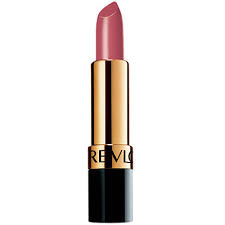 Despite the enormously successful campaigns of the 1980s and 1990s featuring models, Revlon decided to drop almost all fashion models and to instead focus on female movie stars. Their ads featured a number of different actresses including Kate Bosworth, Jaime King, Halle Berry , Susan Sarandon, Melanie Griffith, Julianne Moore, Eva Mendes and Jessica Alba.
Despite the enormously successful campaigns of the 1980s and 1990s featuring models, Revlon decided to drop almost all fashion models and to instead focus on female movie stars. Their ads featured a number of different actresses including Kate Bosworth, Jaime King, Halle Berry , Susan Sarandon, Melanie Griffith, Julianne Moore, Eva Mendes and Jessica Alba.

Levi Strauss & Co.is a privately held clothing company known worldwide for its Levi's brand of denim jeans,founded in 1853 by Levi Strauss.Although the company began producing denim overalls in the 1870s, modern jeans were not produced until the 1920s. The company briefly experimented with employee ownership and a public stock listing, but remains owned and controlled by descendants and relatives of Levi Strauss' four nephews.


From the early 1960s through the mid 1970s, Levi Strauss experienced explosive growth in its business as the more casual look of the 1960s and 1970s ushered in the "blue jeans craze" and served as a catalyst for the brand.Perhaps most impressive, however, was Levi's expansion under Simpkins was accomplished without a single unionized employee as a result of Levi's' and the Hass families' strong stance on human rights and Simpkins' use of "pay for performance" manufacturing at the sewing machine operator level up. As a result, Levi's' plants were perhaps the highest performing, best organized and cleanest textile facilities of their time. Levi's even piped in massive amounts of air conditioning into its press plants, which were known in the industry to be notoriously hot, for the comfort of Levi's workers.

By the 1990s, the brand was facing competition from other brands and cheaper products from overseas, and began accelerating the pace of its US factory closures and its use of offshore subcontracting agreements.

In November 2007, Levi's released a mobile phone in co-operation with ModeLabs. Many of the phone's cosmetic attributes are customisable at the point of purchase.
Deutsche Bank s an international Universal bank with its headquarters in Frankfurt, Germany. The bank employs more than 81,000 people in 76 countries, and has a large presence in Europe, the Americas, Asia Pacific and the emerging markets.

The bank offers financial products and services for corporate and institutional clients along with private and business clients. Services include sales, trading, and origination of debt and equity; mergers and acquisitions (M&A); risk management products, such as derivatives, corporate finance, wealth management, retail banking, fund management, and transaction banking.

Deutsche Bank has offices in major financial centers, such as London, Moscow, Toronto, New York, São Paulo, Singapore, Sydney, Hong Kong and Tokyo. Deutsche Bank’s Chief Executive Officer and Chairman of the Group Executive Committee, since 2002, is Josef Ackermann.

Deutsche Bank was founded in Germany in January 1870 as a specialist bank for foreign trade in Berlin.The Bank’s first foray overseas came shortly afterwards, in Shanghai (1872) and London (1873). Already, at this early stage, the bank was looking further afield, making investments in North and South America, Asia, and Turkey.The bank merged with other local banks in 1929 to create Deutsche Bank und DiscontoGesellschaft, at that point the biggest ever merger in German banking history. In 1937, the company name changed back to Deutsche Bank.

Deutsche Bank has been transformed over the past five years, moving from a German-centric organisation that was renowned for its retail and commercial presence to a global investment bank that is less reliant on its traditional markets for its profitability.For the 2008 financial year, Deutsche Bank reported its first annual loss in five decades, despite receiving billions of dollars from its insurance arrangements with AIG, including $11.8bn from funds provided by the United States taxpayers to bail out AIG.
Deutsche Bank’s mission statement is: “We compete to be the leading global provider of financial solutions for demanding clients creating exceptional value for our shareholders and people.” The bank’s business model rests on two pillars: the Corporate & Investment Bank (CIB) and Private Clients & Asset Management.
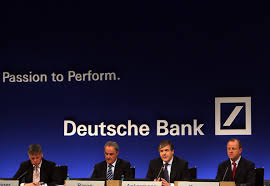
Founded by Enzo Ferrari in 1928 as Scuderia Ferrari, Ferrari is an Italian sports car manufacturer based in Maranello, Italy.The company sponsored drivers and manufactured race cars before moving into production of street-legal vehicles in 1947 as Ferrari S.p.A. The company has been noted for its continued participation in racing throughout its history,, especially in Formula One, where it has enjoyed great success.

Since the company's beginnings, Ferrari has been involved in motorsport, competing in a range of categories including Formula One and Sports car racing through its Scuderia Ferrari sporting division as well as supplying cars and engines to other teams.Currently, the Ferrari works team only compete in Formula One, and is the only team to have competed in the World Championship since its inception in 1950.


Ferrari supply cars complete with V8 engines for the A1 Grand Prix series, from the 2008-09 season. The car was designed by Rory Byrne and is styled to resemble the 2004 Ferrari Formula one car.The 599 GTB Fiorano and F430 GT are used in GT racing series. The Ferrari Challenge is a one make racing series for the Ferrari F430. Ferrari's latest supercar, the 2006 FXX is not road legal, and is therefore only used for track events.
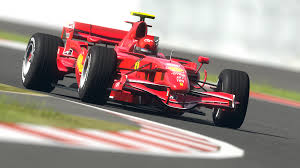
Ferrari's first vehicle was the 125 S sports/racing model. In 1949, the Ferrari 166 Inter, the company's first move into the grand touring market, which continues to make up the bulk of Ferrari sales to the present day.The Dino was the first mid-engined Ferrari. This layout would go on to be used in most Ferraris of the 1980s and 1990s. V6 and V8 Ferrari models make up well over half of the marque's total production.
For a time, Ferrari built 2+2 versions of its mid-engined V8 cars. Although they looked quite different from their 2-seat counterparts, both the GT4 and Mondial were closely related to the 308 GTB.

The company has also produced front-engined 2+2 cars, culminating in the current 612 Scaglietti and upcoming California.Ferrari entered the mid-engined 12-cylinder fray with the Berlinetta Boxer in 1973. The later Testarossa remains one of the most famous Ferraris.
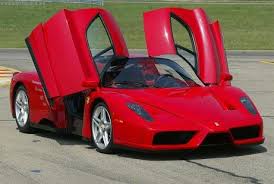
Ferrari has considered making hybrids. A F430 Spider that runs on ethanol was displayed at the 2008 Detroit Auto Show. Ferrari has announced that a hybrid will be in production by 2015.
Samsung has been the world's most popular consumer electronics brand since 2005 and is the best known South Korean brand in the world.Samsung Group accounts for more than 20% of South Korea's total exports and is the leader in many domestic industries, such as the financial, chemical, retail and entertainment industries.

Samsung brand, including Samsung Electronics, the world's largest electronics company, Samsung Heavy Industries, the world's second largest shipbuilder and Samsung Engineering & Construction, a major global construction company.

Lee Byung-Chull founded Samsung, a small trading company with forty employees located in Daegu, in 1938,. The company prospered until the Communist invasion in 1950 when he was forced to leave Seoul and start over in Busan. During the war, Samsung's businesses flourished and its assets grew twenty-fold. In 1953, Lee started a sugar refinery—South, Korea’s first manufacturing facility after the Korean War. The company diversified into many areas and Lee sought to establish Samsung as an industry leader in a wide range of enterprises (Samsung Electronics). The company started moving into businesses such as insurance, securities, and retail. In the early 1970s, Lee borrowed heavily from foreign interests and launched a radio and television station (Samsung Electronics).

South Korean President Park Chung-hee’s regime during the 1960s and 1970s would prove a boon for Samsung. Park placed great importance on industrialization, and focused his economic development strategy on a handful of large domestic conglomerates, protecting them from competition and assisting them financially. Samsung was one of these companies. Park banned several foreign companies from selling consumer electronics in South Korea in order to protect Samsung from foreign competition and nurture an electronics manufacturing sector that was in its infancy.

Samsung Group later formed several electronics-related divisions, such as Samsung Electronics Devices Co., Samsung Electro-Mechanics Co., Samsung Corning Co., and Samsung Semiconductor & Telecommunications Co., and grouped them together under Samsung Electronics Co., Ltd. in 1980s. Its first product was a black-and-white television set (Samsung Electronics).In the late 1980s and early 1990s, Samsung Electronics invested heavily in research and development, investments that were pivotal in pushing the company to the forefront of the global electronics industry.

In 2008, Samsung became the largest mobile phone maker in the United States and 2nd largest mobile phone maker in the World after Nokia.Samsung Electronics, which saw record profits and revenue in 2004 and 2005, overtook Sony as one of the world's most popular consumer electronics brands, and is now ranked #20 in the world overall.By late 2005, Samsung had a net worth of US$77.6 billion.On April 21 2008, Lee Kun-hee resigned as the chairman of Samsung Electronics owing to the Samsung slush funds scandal.
Bavarian Motor Works(BMW) is a German automobile, motorcycle and engine manufacturing company, founded in 1916.BMW's first significant aircraft engine was the BMW IIIa inline-six liquid-cooled engine of 1918, much preferred for its high-altitude performance.With German rearmament in the 1930s, the company again began producing aircraft engines for the Luftwaffe. Among its successful WWII engine designs were the BMW 132 and BMW 801 air-cooled radial engines, and the pioneering BMW 003 axial-flow turbojet, which powered the tiny, 1944-45-era jet-powered "emergency fighter".After World War I, BMW was forced to cease aircraft (engine) production by the terms of the Versailles Armistice Treaty.he company consequently shifted to motorcycle production in 1923,followed by automobiles in 1928-29.
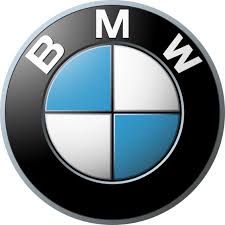 The circular blue and white BMW logo or roundel is portrayed by BMW as the movement of an aircraft propeller, to signify the white blades cutting through the blue sky – an interpretation that BMW adopted for convenience in 1929, twelve years after the roundel was created.The emblem evolved from the circular Rapp Motorenwerke company logo, from which the BMW company grew, combined with the white and blue colors of the flag of Bavaria, reversed to produce the BMW roundel.
The circular blue and white BMW logo or roundel is portrayed by BMW as the movement of an aircraft propeller, to signify the white blades cutting through the blue sky – an interpretation that BMW adopted for convenience in 1929, twelve years after the roundel was created.The emblem evolved from the circular Rapp Motorenwerke company logo, from which the BMW company grew, combined with the white and blue colors of the flag of Bavaria, reversed to produce the BMW roundel.
By 1959 the automotive division of BMW was in financial difficulties and a shareholders meeting was held to decide whether to go into liquidation or find a way of carrying on. It was decided to carry on and to try to cash in on the current economy car boom enjoyed so successfully by some of Germany's ex-aircraft manufacturers such as Messerschmitt and Heinkel. Therefore the rights to manufacture the tiny Italian Iso Isetta were bought using a modified form of BMW's own motorcycle engine. This was moderately successful and helped the company get back on its feet. The dominating shareholder of the BMW Aktiengesellschaft since 1959 is the Quandt family, which owns about 46% of the stock. The rest is in public float.

Chief designer Chris Bangle announced his departure from BMW after serving on the design team for nearly seventeen years. He will be replaced by Adrian van Hooydonk, Bangle's former right hand man. Bangle was famously (or infamously) known for his radical designs such as the 2002 7-Series and the 2002 Z4. In July 2007, Husqvarna was purchased by BMW for a reported 93 million euros. BMW Motorrad plans to continue operating Husqvarna Motorcycles as a separate enterprise. All development, sales and production activities, as well as the current workforce, have remained in place at its present location at Varese.
BMW began building motorcycle engines and then motorcycles after World War I. Its motorcycle brand is now known as BMW Motorrad. Their first successful motorcycle, after the failed Helios and Flink, was the "R32" in 1923. This had a "Boxer" twin engine, in which a cylinder projects into the air-flow from each side of the machine. Apart from their single cylinder models (basically to the same pattern), all their motorcycles used this distinctive layout until the early 1980s. Many BMWs are still produced in this layout, which is designated the R Series.
 BMW was one of the earliest manufacturers to offer anti-lock brakes on production motorcycles starting in the late 1980s. The generation of anti-lock brakes available on the 2006 and later BMW motorcycles pave the way for the introduction of sophisticated electronic stability control, or anti-skid technology – a first for production motorcycles – later in the 2007 model year.BMW has been an innovator in motorcycle suspension design, taking up telescopic front suspension long before most other manufacturers. Then they switched to Earles Fork, front suspension by swinging fork (1955 to 1969). Most modern BMWs are truly rear swingarm, single sided at the back (compare with the regular swinging fork usually, and wrongly, called swinging arm).
BMW was one of the earliest manufacturers to offer anti-lock brakes on production motorcycles starting in the late 1980s. The generation of anti-lock brakes available on the 2006 and later BMW motorcycles pave the way for the introduction of sophisticated electronic stability control, or anti-skid technology – a first for production motorcycles – later in the 2007 model year.BMW has been an innovator in motorcycle suspension design, taking up telescopic front suspension long before most other manufacturers. Then they switched to Earles Fork, front suspension by swinging fork (1955 to 1969). Most modern BMWs are truly rear swingarm, single sided at the back (compare with the regular swinging fork usually, and wrongly, called swinging arm).
Günther Quandt, whose family became major shareholders of BMW 15 years after the war, was a member of the Nazi Party from 1933. After Hitler's election he was appointed to the position of Leader of the Armament Economy, which was a title given to industrialists who played a leading role in the Nazi war economy. Quandt's factories supplied ammunition, rifles, artillery and batteries for the Nazis and, it is claimed, used slave labourers from concentration camps in some of his factories. Quandt's first wife, Magda, later married the Nazi propaganda chief, Joseph Goebbels.
 A documentary which aired on German TV in 2007 claimed that Quandt not only utilized slave labour, but also sidestepped postwar recrimination. BMW itself was not implicated in the documentary, and the firm has made no comment about the Quandts, but claims to have confronted its own wartime history via independent research projects.
A documentary which aired on German TV in 2007 claimed that Quandt not only utilized slave labour, but also sidestepped postwar recrimination. BMW itself was not implicated in the documentary, and the firm has made no comment about the Quandts, but claims to have confronted its own wartime history via independent research projects.





























